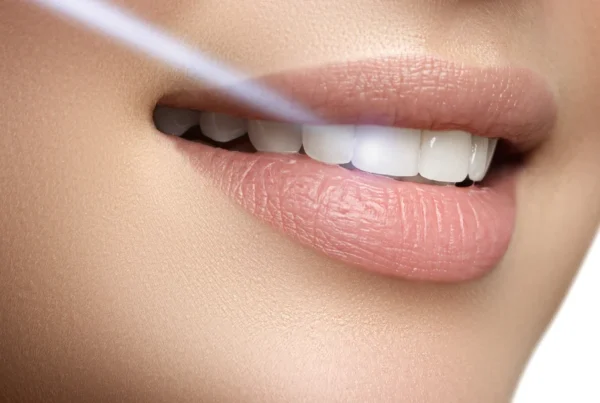Achieving a brighter smile should not entail enduring significant discomfort. By strategically managing and preparing for whitening treatments, tooth sensitivity can not only be reduced but often entirely avoided. Through exploring the causation of sensitivity, identifying potential risk factors, and providing practical preventive measures, we establish a clear roadmap to a pain-free whitening experience.
Understanding the Interplay Between Tooth Sensitivity and Whitening
Unveiling the Root Causes of Sensitivity
At its core, tooth sensitivity is a byproduct of nerve exposure, which can occur from the diminishment of protective enamel or the unveiling of underlying dentin. The whitening process involves the penetration of enamel by peroxide, which can reach the sensitive dentin layer, highlighting the importance of evaluating product concentration and your own dental history before beginning treatment.
Identifying Vulnerable Populations
The susceptibility to sensitivity during whitening procedures is higher among those with pre-existing dental conditions such as weakened enamel, hidden decay, or gum disease. Recognizing your dental health status is a critical step in selecting whitening methods that align with your specific needs, thereby averting unwarranted sensitivity and achieving desired whitening outcomes.
Proactive Pre-Whitening Measures
Choosing a Whitening Solution Tailored to You
To prevent sensitivity, it is vital to select a whitening option that corresponds with your dental health. Less potent whitening formulas can offer effective results gradually while mitigating sensitivity risks. Moreover, seeking professional advice for tailored treatment plans can further alleviate potential sensitivities and guarantee a favorable whitening journey.
Priming Your Teeth with Desensitizing Agents
Strengthen your teeth’s resistance against sensitivity by using desensitizing toothpaste or gels that contain potassium nitrate or fluoride, ideally commencing usage at least a fortnight ahead of whitening treatments. This preparation fortifies the neural pathways, significantly diminishing potential discomfort.
Seeking Professional Insight
Undergoing a dental evaluation prior to whitening not only prevents the intensification of sensitivity but also ensures that you receive personalized product recommendations and care plans that enhance safety and efficiency of the whitening process.
During Whitening: Techniques for Alleviating Sensitivity
Adopting Precision in Application
Employing meticulous application methods as advised by dental professionals helps maintain exposure to peroxide at safe levels. Utilizing custom-fit trays, reducing treatment time, and conducting careful post-application cleanup are strategic choices that can substantially lessen irritation.
Fine-Tuning Daily Routines
Temporarily modifying day-to-day habits is a considerate approach to mitigating discomfort. Steer clear of extreme temperature changes in beverages, limit intake of acidic or sweet items, and adjust oral hygiene practices to include gentler brushing and tempid water to stave off sensitivity during the whitening period.

Post-Whitening: Comprehensive Management of Sensitivity
Techniques for Soothing Sensitive Teeth
After whitening, managing tooth sensitivity involves persisting with desensitizing toothpaste, integrating fluoride mouth rinses, and if necessary, taking anti-inflammatory medications available over the counter. These practical response strategies offer relief swiftly post-treatment.
Recognizing Signs for Dental Consultation
Monitoring and acting upon any persistent or acute symptoms following treatment is critical. Should you experience severe pain, changes in your gum line, or ongoing sensitivity post the standard recovery time, it is imperative to seek prompt dental attention, as these could be indicative of more serious underlying issues.
Long-Term Best Practices for Preventing Sensitivity
Embracing proactive dental care is essential, especially when considering whitening treatments. Regular dental maintenance, avoiding harsh foods, and a gentle approach to everyday oral hygiene lay the groundwork for maintaining dental health and preventing sensitivity.
Whiten Without the Worry—Your Comfort Comes First
Teeth whitening doesn’t have to come with pain. At Fountain of Youth Dental, Dr. Chris Cappetta helps you achieve a radiant smile through personalized care that puts your comfort first. With the right preparation, professional products, and expert guidance, you can brighten your teeth without the sting of sensitivity.
Ready to enjoy whiter teeth and a gentle, effective approach? Book your whitening consultation today and discover how easy a comfortable smile transformation can be.
Frequently Asked Questions
Can whitening treatments be done without causing sensitivity?
Absolutely. With the right preparation and products, such as using desensitizing toothpaste before your treatment, you can significantly reduce or eliminate tooth sensitivity during whitening sessions.
What should I do if my teeth become sensitive after whitening?
If you experience sensitivity after whitening, continue using a desensitizing toothpaste and avoid foods at extreme temperatures. If sensitivity persists, consult with your dentist.
How can I minimize sensitivity if I have weak enamel?
Start by pre-treating your teeth with desensitizing products and choose whitening treatments that are gentle. It’s also essential to consult with your dentist for personalized advice tailored to your enamel condition.
Ready for a dentist who cares as much as you do about your smile? Contact Dr. Cappetta today to schedule a no-pressure consultation. You can also call us at (210) 614-5481.
With Fountain of Youth Dental, you can stop settling and finally get the healthy, stunning smile you deserve!
Schedule Your Free Consultation Today!
Fountain of Youth Dental
5282 Medical Dr. #520 San Antonio, TX 78229 (210) 614-5481 Driving Directions





